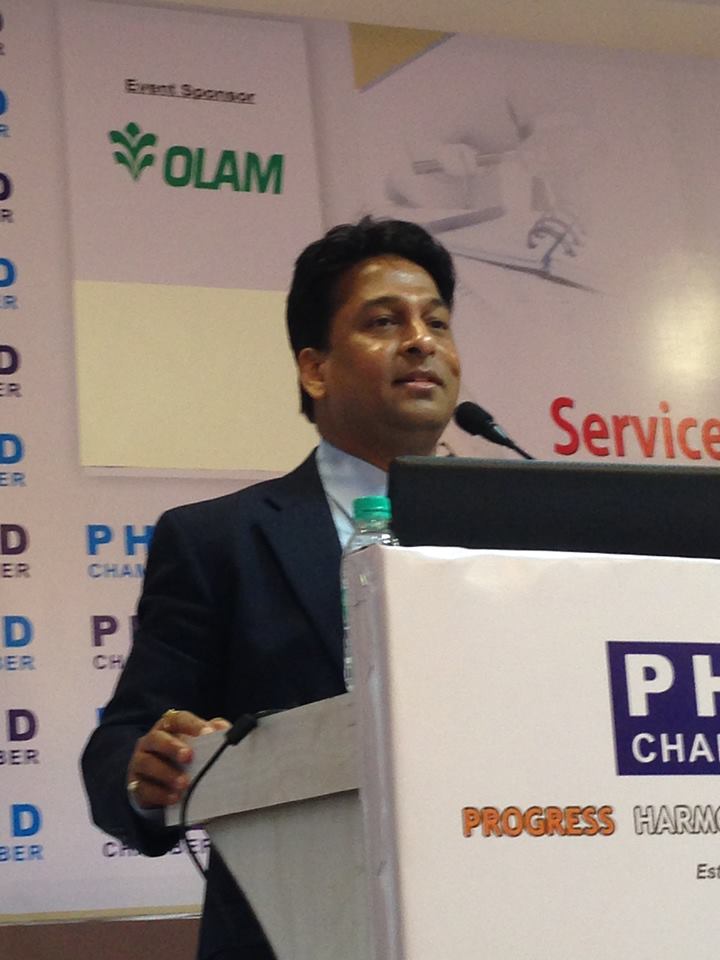| Article Section | |||||||||||
|
Home |
|||||||||||
Lok Sabha passes the GST Constitutional Amendment Bill with 2/3 majority |
|||||||||||
|
|||||||||||
Lok Sabha passes the GST Constitutional Amendment Bill with 2/3 majority |
|||||||||||
|
|||||||||||
Dear Professional Colleague, Lok Sabha passes the GST Constitutional Amendment Bill with 2/3 majority Amid stiff resistance followed by walk out by the Congress Members, the Lok Sabha today, on May 6, 2015 has passed the much awaited Constitutional (122nd Amendment) Bill, 2014 on Goods and Services Tax (“GST”) with 2/3rd majority. The Hon’ble Finance Minister, Mr Arun Jaitley, has indeed been working hard for the smooth passage of the GST Constitutional Amendment Bill tabled in the last session of the Parliament in December, 2014 [calling it the “Single biggest tax reform since Independence”], but he was taken aback by the sudden vociferous stand coupled with aggressive and brisk walk-out from the House by the main Opposition Party. As the Lok Sabha took up discussion on the GST Constitutional Amendment Bill on Tuesday, Finance Minister Mr. Arun Jaitley ‘requested’ the Opposition to help clear the Bill and not to insist on sending it to the Standing Committee, otherwise the planned roll out of GST from April 1, 2016 will be delayed by another fiscal. Meanwhile, Mr. Arun Jaitley said that GST will reduce prices in the long run and will boost economic growth. He further added that the Central and State Governments are not interested in imposing higher GST rates that could hurt people. "I don't forsee any state losing revenue after roll out of GST," Mr. Arun Jaitley added. The GST Constitutional Amendment Bill paves the way for a pan-India Tax regime and a unified market across the Country, ending the multiplicity of Central and State Taxes. Because it seeks to amend the Constitutional, it needs two-thirds of both houses to vote in its favour. Now, after being passed in the Lok Sabha, the GST Constitutional Amendment Bill requires to be passed with 2/3rd majority in the Rajya Sabha as well followed by its ratification by at least 50% of the States before it becomes law of the land. In the Rajya Sabha, where the ruling BJP is in a minority, the Congress has said it will insist on sending the Bill to a Parliamentary committee for review. Thus, the GST Constitutional Amendment Bill is likely to face stiff opposition at the Rajya Sabha and may be routed to the Standing Committee. Following are the salient features of the GST Constitutional Amendment Bill:
As an endeavour to give clarity on GST, its constitution and implementation, CA. Bimal Jain has recorded three videos on GST. The videos touch the issues pertaining to present Indirect Tax systems and suggests how the GST can be a Good and Simplified Tax System. The videos consist of following three parts:-
1. Goods and Services Tax - Need and Necessity; 2. Overview of Dual GST Model in India; 3. Highlights of 122 Constitutional Amendment Bill. Hope the information will assist you in your Professional endeavours. In case of any query/ information, please do not hesitate to write back to us. Thanks and Best Regards. Bimal Jain A2Z TAXCORP LLP Tax and Law Practitioners Delhi: Flat No. 34B, Ground Floor, Pocket - 1, Mayur Vihar Phase-1 Delhi - 110091 (India) Tel: +91 11 22757595/ 42427056 Chandigarh: H. No. 908, Sector 12-A, Panchkula, Haryana - 134115 Kolkata: Ist Floor, 10 R G Kar Road Shyambazar, Kolkata - 700 004 Email: [email protected] Web: www.a2ztaxcorp.com Disclaimer: The contents of this document are solely for informational purpose. It does not constitute professional advice or recommendation of firm. Neither the authors nor firm and its affiliates accepts any liabilities for any loss or damage of any kind arising out of any information in this document nor for any actions taken in reliance thereon. Readers are advised to consult the professional for understanding applicability of this newsletter in the respective scenarios. While due care has been taken in preparing this document, the existence of mistakes and omissions herein is not ruled out. No part of this document should be distributed or copied (except for personal, non-commercial use) without our written permission.
By: Bimal jain - May 8, 2015
|
|||||||||||
| |
|||||||||||
 9911796707
9911796707

